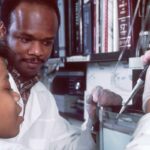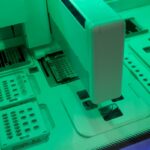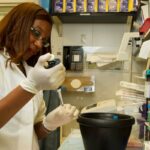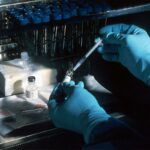Brief Overview of RNA and DNA
The building blocks of life, RNA (Ribonucleic Acid) and DNA (Deoxyribonucleic Acid), are essential to all living organisms. They carry genetic information, guiding the production of proteins and other essential molecules. DNA, often compared to a blueprint, contains the instructions for building an organism, while RNA acts as a messenger, translating DNA’s instructions into action.
The Traditional Understanding of RNA and DNA Conversion
Traditionally, it has been understood that the flow of genetic information is unidirectional – from DNA to RNA to proteins. This principle, known as the Central Dogma of Molecular Biology, has been the cornerstone of genetics for decades. However, recent discoveries have begun to challenge this long-held belief.
The Question: Can RNA Turn into DNA?
The Common Belief about RNA to DNA Conversion
For a long time, it was believed that RNA could not be converted back into DNA within cells. This was largely due to the lack of a known biological process that could facilitate such a conversion. The only known exceptions were retroviruses like HIV, which use an enzyme called reverse transcriptase to convert their RNA into DNA.
The Emerging Research Questioning this Belief
However, recent research has started to question this traditional belief. Scientists have discovered that certain enzymes within cells might be capable of converting RNA back into DNA, a process that could have profound implications for our understanding of genetics and disease.
The Role of Enzymes in RNA to DNA Conversion
Understanding the Role of Enzymes in Genetic Processes
Enzymes are proteins that catalyze biochemical reactions, including those involved in genetic processes. They can facilitate the replication of DNA, the transcription of DNA into RNA, and the translation of RNA into proteins.
The Significance of Reverse Transcriptase in HIV
Reverse transcriptase, an enzyme found in retroviruses like HIV, is known to convert RNA into DNA, a crucial step in the viral life cycle. This enzyme has been the focus of much research, particularly in the development of antiretroviral drugs to treat HIV.
The Discovery of Polymerase Theta
Introduction to Polymerase Theta
Polymerase Theta (Pol θ) is an enzyme that was initially identified for its role in DNA repair. However, recent studies have suggested that it might also have the ability to convert RNA into DNA.
The Unusual Capabilities of Polymerase Theta
Unlike other DNA polymerases, Pol θ has been found to possess a unique set of capabilities. It can bind to RNA and use it as a template to synthesize DNA, a process that was previously thought to be exclusive to reverse transcriptase.
The Experiment: Testing Polymerase Theta Against HIV Reverse Transcriptase
The Design of the Experiment
In a groundbreaking experiment, scientists compared the ability of Pol θ and HIV reverse transcriptase to convert RNA into DNA. They used a variety of RNA templates and measured the amount of DNA produced by each enzyme.
The Results: Polymerase Theta’s Performance in Converting RNA to DNA
The results were surprising. Pol θ was not only able to convert RNA into DNA, but it did so with a higher efficiency and accuracy than HIV reverse transcriptase. This discovery has profound implications for our understanding of genetic processes.
Comparing Polymerase Theta and HIV Reverse Transcriptase
Similarities in RNA to DNA Conversion
Both Pol θ and HIV reverse transcriptase can convert RNA into DNA, challenging the traditional understanding of the Central Dogma of Molecular Biology. This suggests that RNA to DNA conversion might be more common in cells than previously thought.
Differences in Efficiency and Accuracy
Despite their similarities, there are significant differences between Pol θ and HIV reverse transcriptase. Pol θ was found to be more efficient and accurate in converting RNA into DNA, suggesting that it might play a crucial role in cellular processes.
Implications of Polymerase Theta’s Ability to Convert RNA to DNA
Potential Impact on Our Understanding of Genetic Processes
The discovery of Pol θ’s ability to convert RNA into DNA could revolutionize our understanding of genetic processes. It suggests that the flow of genetic information might not be as unidirectional as previously thought, opening up new avenues for research.
Possible Applications in Medicine and Biotechnology
This discovery could also have practical applications. For instance, it could lead to the development of new antiretroviral drugs that target Pol θ. Additionally, it could be used in biotechnology to engineer cells with specific genetic traits.
Controversies and Criticisms of the Research
Skepticism in the Scientific Community
Despite the exciting potential of this discovery, it has been met with skepticism in the scientific community. Some scientists argue that the evidence is not strong enough to overturn the Central Dogma of Molecular Biology.
Addressing the Criticisms and Controversies
In response to these criticisms, researchers argue that their findings do not negate the Central Dogma, but rather expand upon it. They suggest that RNA to DNA conversion might be an additional, previously overlooked, genetic process.
Future Directions for Research on RNA to DNA Conversion
Potential Areas for Further Investigation
This discovery opens up many new areas for research. For instance, scientists could investigate the role of Pol θ in disease, particularly in cancers where it is often overexpressed. They could also explore its potential applications in gene therapy and biotechnology.
The Future of RNA to DNA Conversion Research
As we continue to unravel the mysteries of genetics, the question of whether RNA can turn into DNA will undoubtedly remain a hot topic of research. With the discovery of Pol θ’s unique capabilities, we are one step closer to answering this question.
Conclusion
Recap of the Significance of the Research
The discovery of Pol θ’s ability to convert RNA into DNA is a groundbreaking development in genetics. It challenges our traditional understanding of genetic processes and opens up new possibilities for research and applications in medicine and biotechnology.
Final Thoughts on the Question: Can RNA Turn into DNA?
While the question of whether RNA can turn into DNA is still a matter of debate, the discovery of Pol θ’s unique capabilities suggests that the answer might be yes. As we continue to explore this fascinating area of research, we can look forward to many more exciting discoveries in the future.
References
- Aiewsakun, P., & Adisakwattana, P. (2020). The dawn of the age of the RNA-to-DNA back flow. Nature Reviews Molecular Cell Biology, 21(5), 267-268.
- Kent, T., Chandramouly, G., McDevitt, S. M., Ozdemir, A. Y., & Pomerantz, R. T. (2016). Mechanism of microhomology-mediated end-joining promoted by human DNA polymerase θ. Nature Structural & Molecular Biology, 23(3), 230-237.
- Pomerantz, R. T., & O’Donnell, M. (2008). The replisome uses mRNA as a primer after colliding with RNA polymerase. Nature, 456(7223), 762-766.








